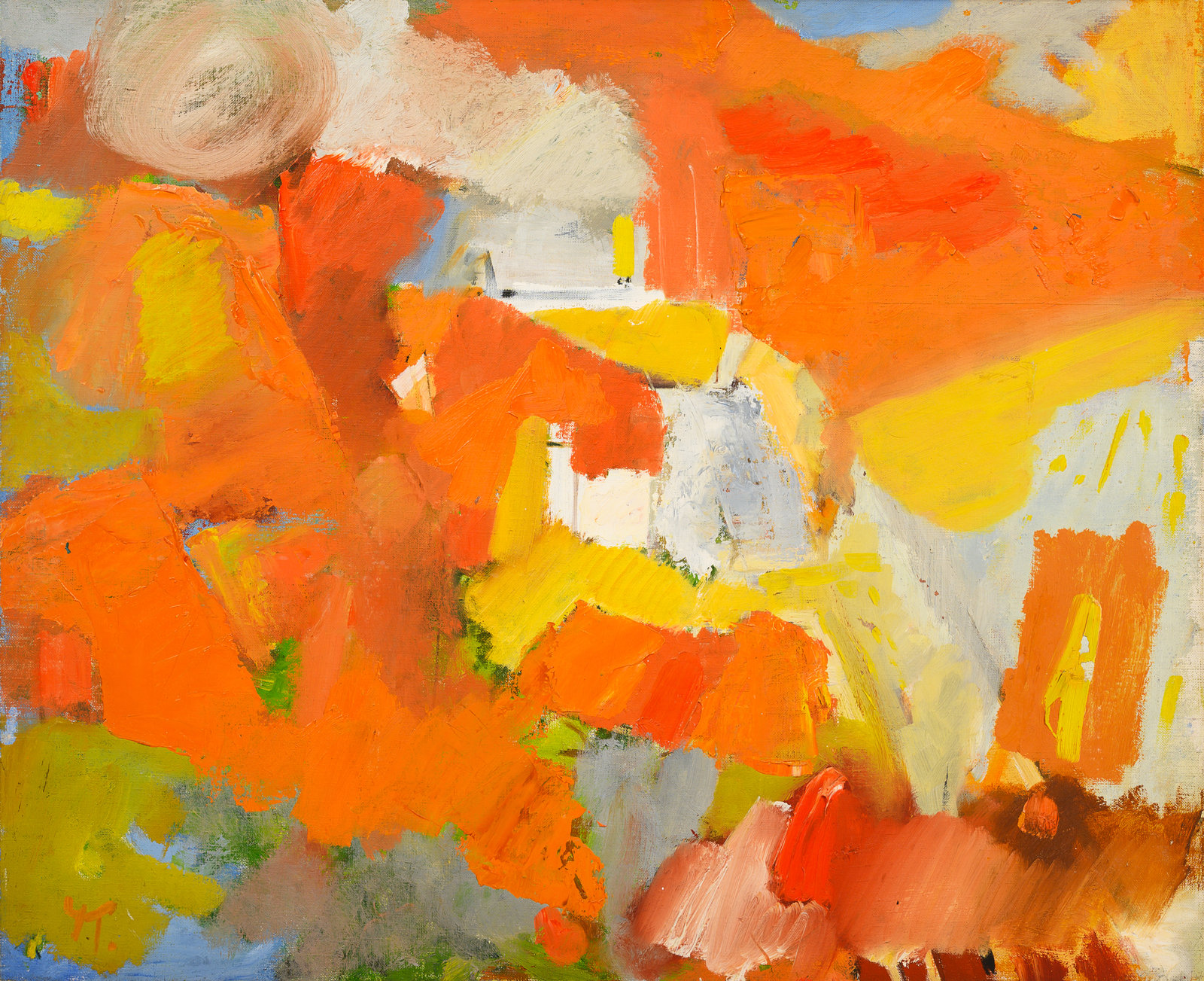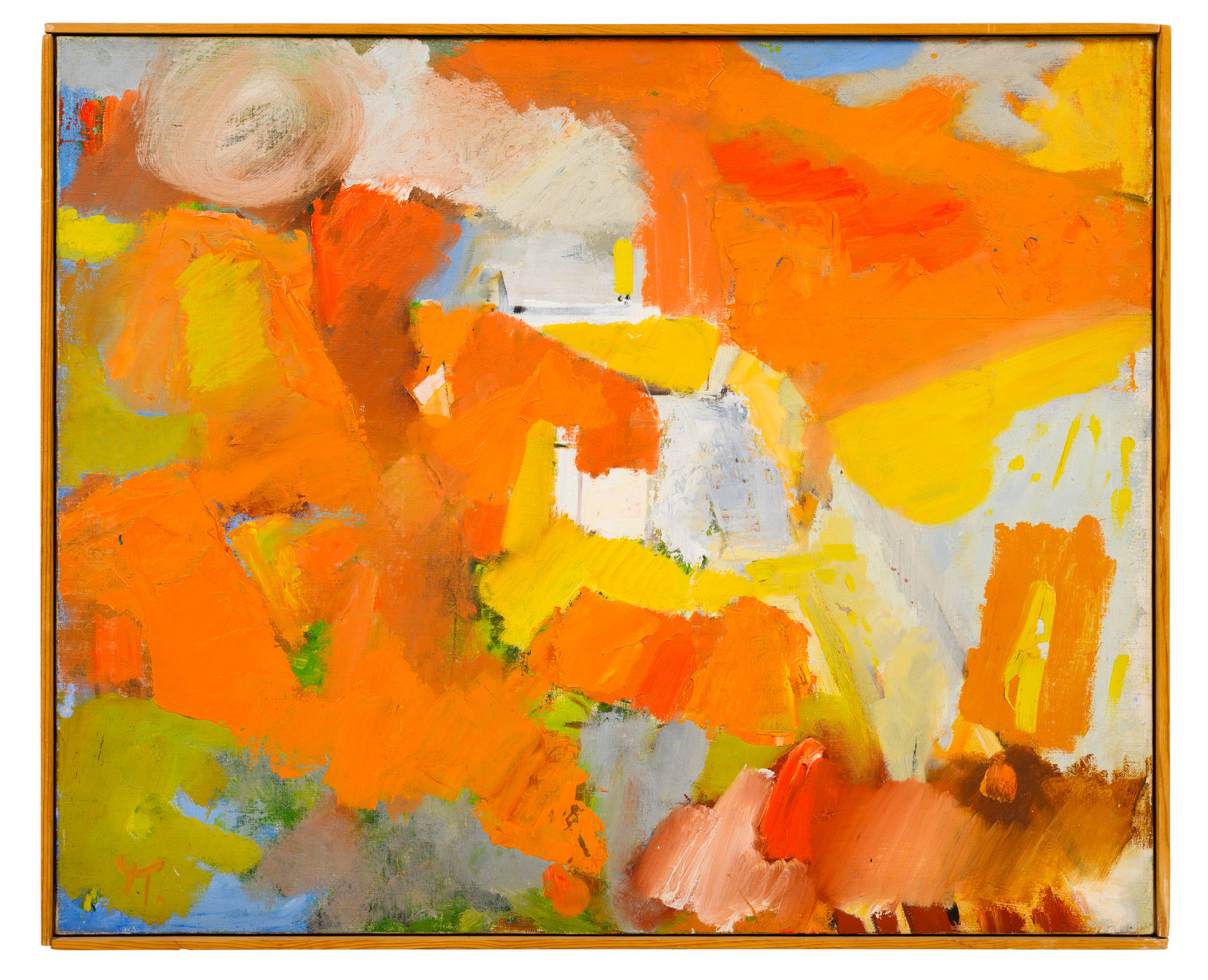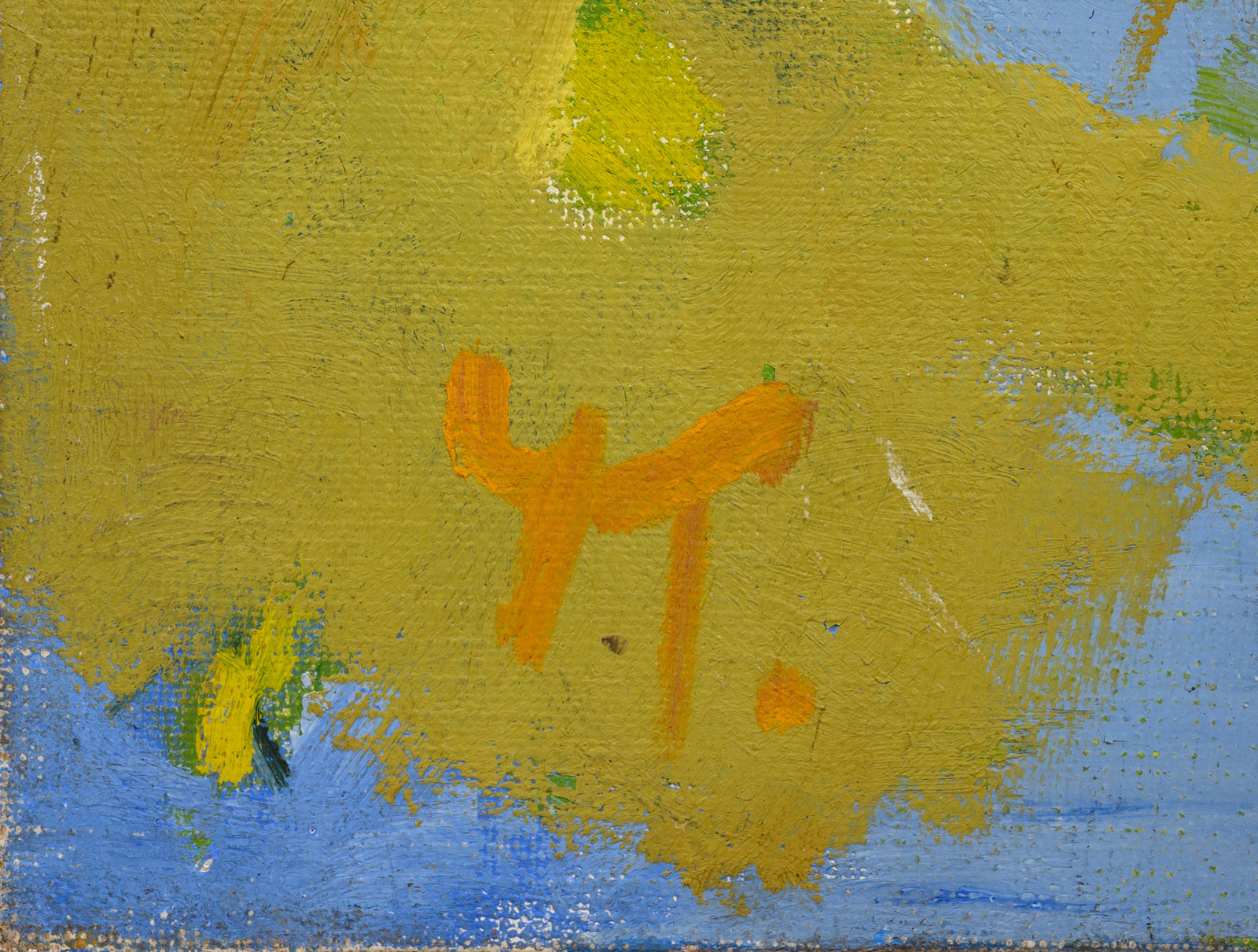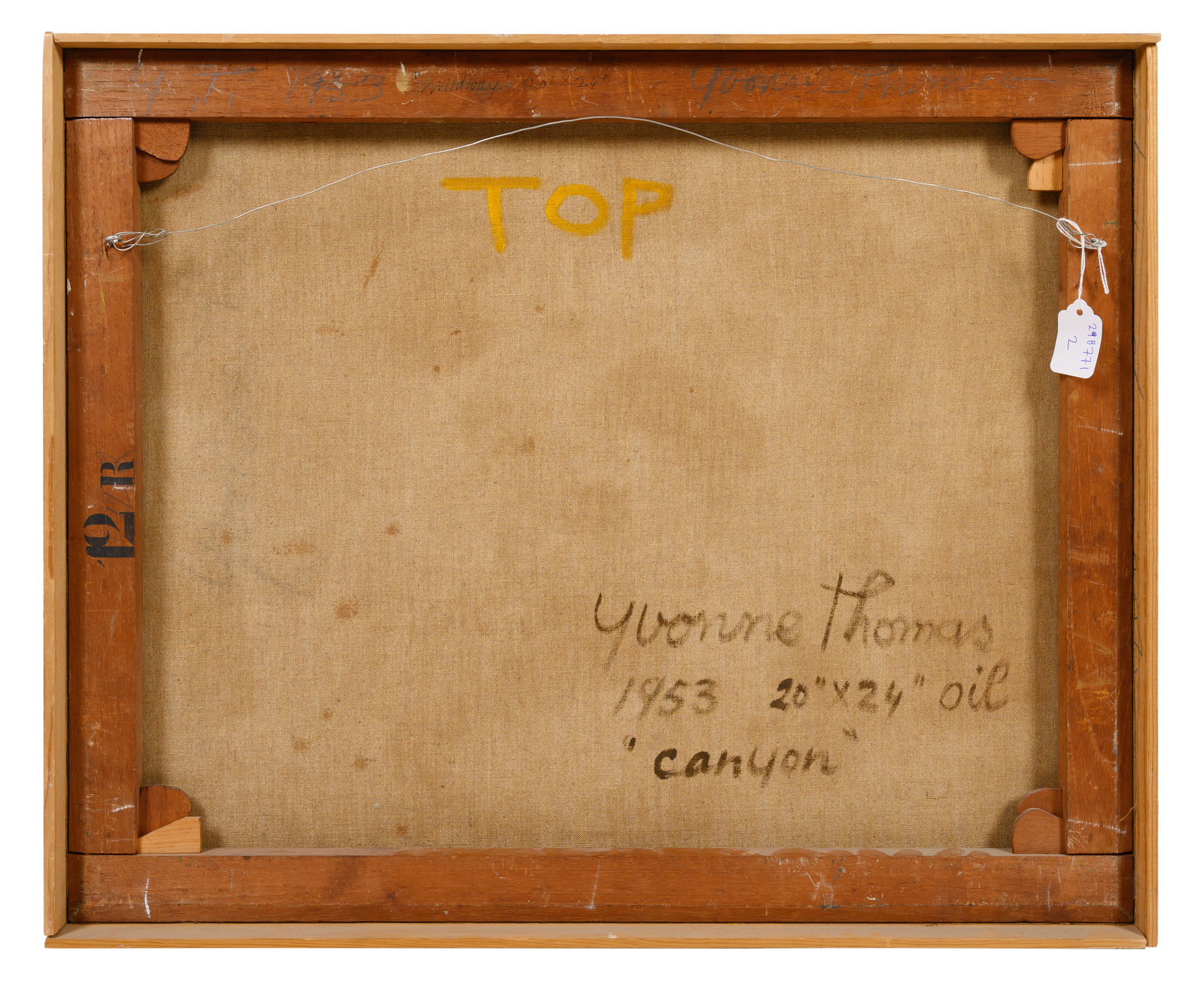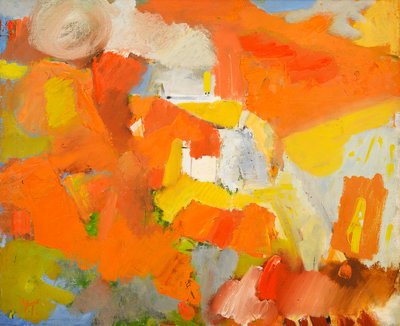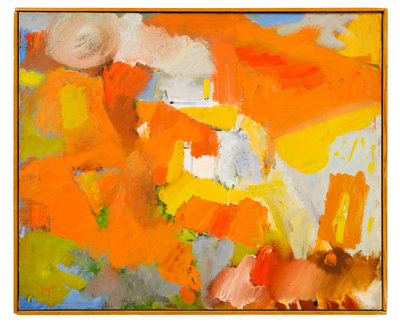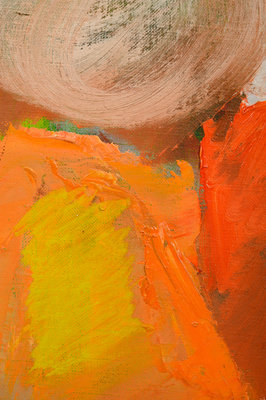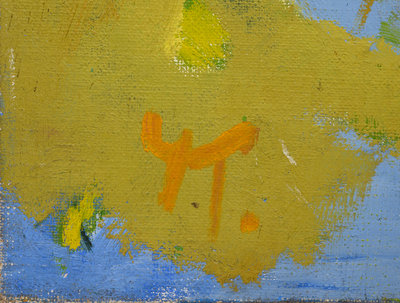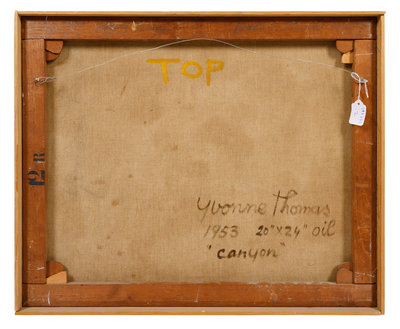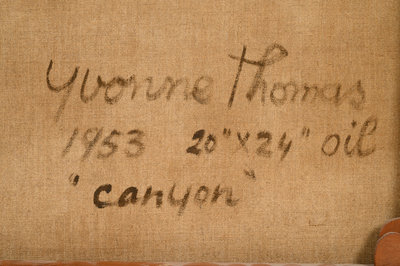Yvonne Thomas
(American, 1913-2009)
Canyon
, 1953
Sale 907 - Post War and Contemporary Art
Sep 28, 2021
10:00AM CT
Live / Chicago
Estimate
$30,000 -
$50,000
Sold for $77,500
Sold prices are inclusive of Buyer’s Premium
Lot Description
Yvonne Thomas
(American, 1913-2009)
Canyon
, 1953oil on canvas
initialed YT (lower left); signed, titled and dated (verso)
20 x 24 inches.
Property from a Private Collection, New York
Lot Essay:
Yvonne Thomas (American, 1913-2009), was born in Nice, France just before the onset of the Great War, eventually immigrating to the United States at the height of the roaring twenties in 1925. Out of necessity Thomas’ initial creative pursuits were commercial in nature, earning a living as a fashion illustrator and a graphic artist during the worst of the Great Depression prior to eventually enrolling at Artists Student League in 1938. At the ASL she studied closely with Vaclav Vytlacil and committed herself entirely to painting, staying faithful to this material dedication for the next seven decades.
Thomas’ establishing breakthrough came in 1948 when artist Roberto Matta’s wife Patricia introduced her to the mentorship of the founders and of the revolutionary and short-lived Subjects of the Artist School, the abstraction defining icons William Baziotes, David Hare, Robert Motherwell, Barnett Newman, and Mark Rothko. Although open to the public lectures were presented by other nonobjective trailblazers of the day, the school, housed in a loft at 23 East 8th Street and more familiarly known as The Club, was more private collaborative than tutorial in format, with Thomas exploring paint and process possibilities alongside and in unison with her more celebrated teachers. By participating in these communal creative experiments and through connections made through the program with the like minds of Willem de Kooning, Lee Krasner, Marcel Duchamp, Philip Guston, Clyfford Still and Ad Reinhardt, Thomas became an artistic peer more than a student and indoctrinated her as one of the few female voices in the first wave of Abstract Expressionism movement.
After the avantgarde school closed to become a more formal studio and exhibition space, Thomas continued her education in Abstract Expressionism directly with Motherwell focusing on varied technical and mark making approaches to procedural spontaneity, instinctive response and more cerebral automatism. Though further work with Hans Hofmann in the legendary setting of Provincetown the concern of color as more of essential evocative content than just compositional component confidentially emerged in Thomas work. Moving into the 1950s Thomas abandons the convention of figure ground differentiation solving the problem of imagined space more inclusively allowing the broad swathes of predominantly analogous pigments to unify the canvas plane with both visually and emotionally immersive effect.
Painted in the year prior to her first solo show at Hendler Gallery in Philadelphia, Canyon, 1953 demonstrates Thomas as colorist at full strength of expression. Anchored by large gestural passages of heavily applied yet sensitively handled orange, it is Thomas’ most passionately favored hue yellow that atmospherically defines the positive and negative space, supplying compositional harmony with comforting mood. Exhibiting the dual guidance of Motherwell and Hofmann, Thomas’s color choices of this era return to sundrenched dreamy cradle memories of her grandmother’s Provencal garden as source. The lush yellows of Mimosa blooms, the delicate greens of Eucalyptus leaves and the vibrant orange tones of the eponymous fruit tree most frequently, at play with facility in Canyon, comprising her alluring palette. As the title suggests, the viewer can imagine sun light dancing of rock formations, shadows at play on saturated tones of cliff, bluff, gulch and gorge surfaces and silhouettes. The inventiveness of nature and structural organization of geology reimagined through paint and captured as a feeling in two dimensions, pleasurable and mysterious.
Despite having important exhibitions at Abstract Expression stalwarts Stable and Betty Parsons galleries, as well as being included in all the New York Painting and Sculpture Annuals and the historic 1951 9th Street Show, Thomas’ significant contributions to the inception of the movement was greatly ignored at the time. A plight sadly shared by other female talents of the day whose substantial influence was also overshadowed by their more heralded male contemporaries due to societal inequality and is finally being corrected in recent years. Canyon, 1953 is a rare gem and extraordinary example of the still underappreciated Thomas’ most accomplished painting during the formative years of one of the most important art movements of the second half of the 20th century, a movement she is an almost forgotten foundational builder of.
Condition Report
The physical condition of lots in our auctions can vary due to
age, normal wear and tear, previous damage, and
restoration/repair. All lots are sold "AS IS," in the condition
they are in at the time of the auction, and we and the seller make
no representation or warranty and assume no liability of any kind
as to a lot's condition. Any reference to condition in a catalogue
description or a condition report shall not amount to a full
accounting of condition. Condition reports prepared by Hindman
staff are provided as a convenience and may be requested from the
Department prior to bidding.
The absence of a posted condition report on the Hindman website or
in our catalogues should not be interpreted as commentary on an
item's condition. Prospective buyers are responsible for
inspecting a lot or sending their agent or conservator to inspect
the lot on their behalf, and for ensuring that they have
requested, received and understood any condition report provided
by Hindman.
Please email conditionreports@hindmanauctions.com for any additional information or questions you may have regarding this lot.
